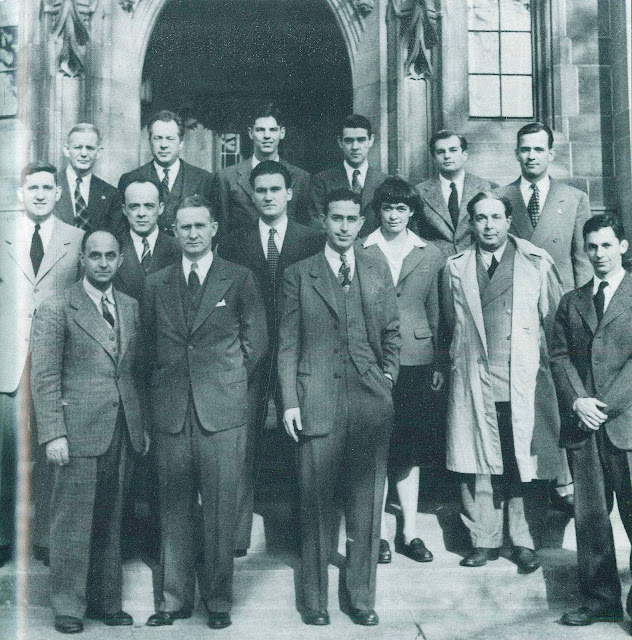The CP-1 (Chicago Pile 1) reactor became the first reactor in human history to reach criticality and trigger a fission chain reaction on December 2, 1942, at the University of Chicago's experimental reactor, producing plutonium-239, the material used in the atomic bomb. On its fourth anniversary, December 12, 1946, CP-1 atomic scientists pose for a group photo in front of Bernard A. Eckhart Hall at the University of Chicago, where they won a glorious victory for their contribution to the atomic bomb. The U.S. had been based in Manhattan, New York since August 3, 1942, when a group of scientists and the military began secretly working together to test the atomic bomb. Shortly thereafter, CP-1 was incorporated into the Manhattan Project's development of the atomic bomb.
The nuclear age began at 5:30 a.m. on July 16, 1945. A nuclear weapon exploded at Trinity, near Alamogordo, New Mexico. A prelude to the atomic bombings of Hiroshima and Nagasaki, which forced the surrender of Japan and ended World War II, the Trinity test was the culmination of a menacing devil's work by scientists, private industry, and the U.S. military to elicit atomic fission. During World War II, if Nazi Germany could have designed the first atomic bomb, Allied victory would have been almost lost. The U.S. Manhattan Project involved everything from a world war to a global war in order to design the world's first atomic bomb. From the clandestine origins of nuclear weapons at Oak Ridge, Hanford, and Los Alamos, the Manhattan Project unfolded until the day the U.S. military snatched victory from the Axis powers and won the war against Japan.
At the pinnacle of nuclear weapons history, the Manhattan Project exploded Albert Einstein's famous equation E = MC2 against a staggering tyranny. In 1907, Einstein hypothesized an equation for the equivalence of mass and energy: energy (E) = mass (m) x speed of light (c) squared. In other words, he proved that any matter can produce an infinite and enormous amount of energy as the square of the speed of light. He suggested the birth of matter from the infinite and enormous energy of outer space. The Manhattan Project, which produced the atomic bomb, was led by scientist Robert Oppenheimer, who realized a working nuclear weapon on July 16, 1945. The project was actually manifested by President Roosevelt from a letter from Einstein and Leo Szilard. The Manhattan Project was the first project to set off a nuclear chain reaction, threatening the existence of the earth where atomic nuclei continue to split and explode.
Pioneers of the CP-1 (Chicago Pile 1) reactor reunited for their fourth anniversary in front of Bernard A. Eckhart Hall at the University of Chicago. Back row, left to right: Norman Hilberry, Samuel Allison, Thomas Brill, Robert G. Nobles, Warren Nyer Nyer, and Marvin Wilkening. Middle row: Harold Agnew, William Sturm, Harold Lichtenberger, Leona W. Marshall, Leo Szilard.) Front row: Enrico Fermi, Walter H. Zinn, Albert Wattenberg, and Herbert L. Anderson.

